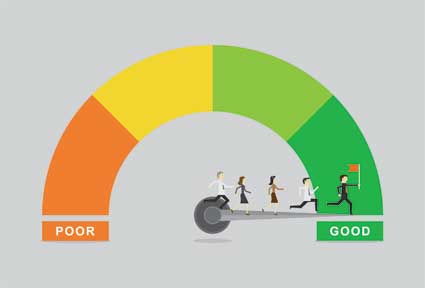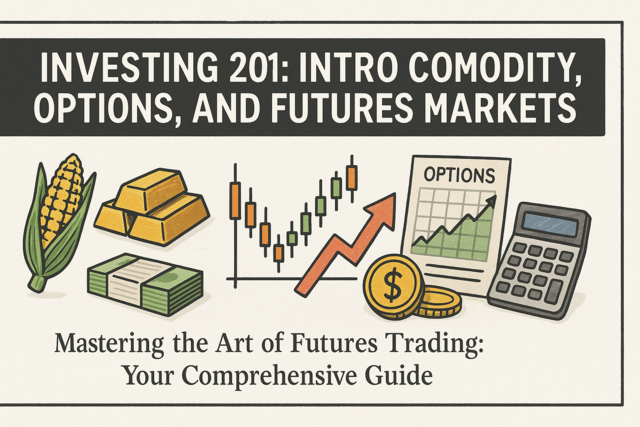Types of Mortgage Loans: Fixed and Adjustable Rate Mortgages (ARMs)
Fixed Rate versus Adjustable Rate Mortgages (ARMs)
Pros and Cons of Fixed Rate and Adjustable Rate Mortgages
First where fixed rate mortgages are concerned, the benefits include:
Stability as the interest rate (tied to the 10-year Treasury bond) does not waiver, thus borrowers are able to anticipate their monthly payment amounts. Unfortunately, predictability comes at a premium price, in the form of a higher interest rate.
For borrowers interested in long-term loans, the notion of fixed rate loan takes on added appeal for the additional fees in interest costs become much more reasonable when amortized over the life of the loan.
On the flipside, in terms of negative factors associated with fixed rate mortgages, borrowers are unable to capitalize upon the falling of interest rates.
Rather, to gain from such conditions, the borrower would need to go through a refinance replete with an additional outlay of costs (in the thousands of dollars), efforts (spent meeting with bankers or brokers, gathering documents, and so on) and mental stress.
Further, fixed rate mortgages do not reward borrowers with reduced rates when they make payments earlier than scheduled. And instead of morphing from one lender to the next, fixed rate mortgages tend to remain fairly consistent from lender to lender. This is because lenders often keep adjustable rate mortgages on their books whereas they sell off their fixed rate mortgages.
Where adjustable rate mortgages (ARMs) are concerned, because they are tied to a volatile index (could be one of many) the incentives include: lower initial rate (2 to 3% below fixed rate mortgages) and lower monthly payments (varies based upon interest rate fluctuations), easier qualification requirements (both initially and when applying for larger loans), and varying interest rates not as much of an issue for those who only plan to keep the property for a short period of time (for instance, five years or less).
Yet, when favorable economic conditions change, the ARM holder may find their payments beyond their means due to the fact that they have been adjusted based upon current interest rates.
Though the making of regular monthly payments may have formerly been struggle free, should interest rates reverse and go sky high, the end result may prove to be too great for a new homeowner to shoulder.
ARMs: How They Work
Because fixed rate mortgages are able to lock in the same interest rate over an extended period of time, they lack some of the ARMs complexity. In light of the ARMs being more involved, we will spend a bit more time (than we have on fixed rate mortgages) looking at the functioning of ARMs.
Within the ARM agreement there is likely to include some mention of the following four areas: initial rates, margins, adjustment intervals and rate or payment caps. Hence, in addition to basic rate and index information, it is important to take into account these components of the mortgage, as well.
Initial Rate (teaser rate)
When explaining the concept of initial rate to the client what you may wish to say is that the rate they are charged for the loan tends to generally be lower than the current interest rate. On account of the lower initial rate clients are often able to attain ARMs for homes they desire to purchase although they may be unable to get approval for a fixed rate mortgage.
Margin
At the end of the initial rate term, the client's interest rate will be based on the indexes specific to their loan. And though the index will not reflect the actual percentage interest rate the client will pay; it does represent the figure based upon which interest rates will be calculated in the future.
Interval of Adjustment
Within ARMs one of the notable elements is the concept of adjustment period. When you come across ARMs, they tend to be accompanied by such numbers as 1-1, 3-1, or 5-1.
These figures refer to the period between potential interest rate adjustments. The first figure in each set refers to the initial period of the loan where the interest rate is consistent with day one of the loan.
The second figure of the adjustment period indicates the frequency with which adjustments may be made to the rate following the initial period.
Rate or Payment Caps
When working with ARMs, bankers-brokers should also be well versed in the concept of interest rate caps. Rate caps, though not always in place, act as a modulator for borrowers who have taken a risk by purchasing an ARM.
Due to the great benefits they can deliver, rate caps are often foreseen as deal breakers for they limit the amount of interest that can be charged or, rather, the amount an adjustable rate mortgage can actually adjust.
With respect to ARMs, there are two types of interest rate caps:
Periodic caps. Periodic caps limit the amount one's interest rate can increase from one adjustment period to another.
Note: Overall caps have been required by law since 1987.
Additional Types of Mortgages
Not very long ago, there were essentially three types of mortgages available to all home buyers: fixed rate conventional mortgages, Federal Housing Administration (FHA) loans, and Veteran Affairs (VA) loans.
Nowadays, there is a smattering of mortgage loan types on the market, as the saying goes, "More mortgage loan types than you can shake a stick at!"
Yet, in spite of the vast array of available mortgage types, all mortgage plans can be divided into two primary categories: fixed rate and adjustable rate mortgages. And we will see how within those groupings there exists a host of offshoots and combinations of the two.
Government Mortgages
The three primary types of government backed mortgages include:
FHA Loans. FHA loans are issued by federally qualified lenders and insured by the Federal Housing Administration (FHA). FHA loans were specifically designed to help first time homeowners who also happen to be moderate income borrowers lacking the wherewithal to put down a large down payment.
Under the scope of an FHA loan, the borrower can potentially get up to 97% of the value of the home. And, because the required 3% down payment is slight and may come from a wide range of sources, for instance, a gift or grant, FHA loans tend to fare very well for first time buyers.
Another advantage of FHA loans is that they are insured by the U.S. Department of Housing and the U.S. Department of Housing and Urban Development (HUD).
Hence, rather than making direct loans, FHA insures the loans made on behalf of private lenders. Note: Section 251 insures home purchase or refinancing loans with interest rates that may increase or decrease over time, which enables consumers to purchase or refinance their home at a lower initial interest rate.
As a banker-broker, your institution may or may not be certified as an originator of FHA loans. Should it include FHA loans within its portfolio of offerings then it has been given the authority to set its own rates and terms.
RHS Loan Programs
For rural residents (particularly those who use a portion of their land or property to grow agricultural products), the Rural Housing Service (RHS) of the U.S. Department of Agriculture guarantees loans that require minimal closing costs and zero down payment.
Balloon Mortgages. These are short term loans that initially look identical to adjustable rate mortgages, the catch is that in five, seven, or ten years (the pre-specified period) a single large payment (balloon) covering all of the remaining principal will need to paid. Typical benefits to borrowers include a lower interest rate and less restrictive qualifications as compared with other types of mortgage loans, such as a 30-year fixed mortgage.
Combined (Hybrid) Loans
The varieties of Hybrid loans, combinations of fixed and ARM loans include:
Two-Step Mortgages The two-step is a form of adjustable Rate Mortgage susceptible to only one adjustment during the course of five or seven years. Following the adjustment, the interest rate remains fixed for the duration of the loan. In short, though borrowers of this type of loan may initially benefit from the lower rate, over time, they end up paying more for the same borrowed amount.
Convertible Mortgage Loans. Another form of adjustable rate mortgage, convertible loans start off offering a fixed rate for the first three, five, or seven years then change to a traditional ARM that fluctuates with the market. Those who benefit the most from a convertible loan share the belief that interest rates are going to go down.
Graduated Payment Mortgages (GPM). Under the scope of graduated payment mortgages, the borrower begins by making smaller payments and, within five or so years, increases the size of their regular payments.
The benefits of GPMs are that they initially afford borrowers to take out mortgages on properties they may not have otherwise had the means to afford. Yet, down the road, due to the initial lower payment structure (whereby nothing is added to the principal), borrowers can easily find themselves in a negatively amortized* situation.
*Negatively amortized loan. In cases where ARMs (for example, graduated payment mortgage loans) offer payment caps yet not interest rate caps, the borrower becomes restricted in the amount by which the monthly payment can increase.
Should the interest rates rise to the point where the monthly mortgage payment does not cover the total interest due, any unpaid interest gets added to the loan balance, increasing the overall balance due on the loan.
The 2-1 buydown works in the following manner:
Note: As a general rule, buydown mortgages prove to be popular because each payment includes reductions in both the principal and interest portions of the loan.

























